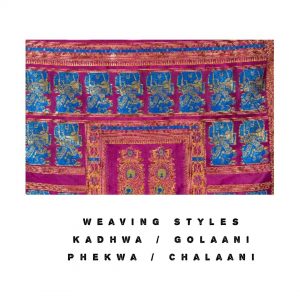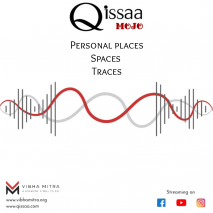The romance of the rich tradition of India seeped in our vibrant heritage, culture and history. A tapestry of objects, odds and ends, bits and pieces. Legends of the Indian diaspora!
Rediscovering our traditions and Legacy. Creating awareness. Heritage Tours! Handmade, handcrafted!
Vibha Mitra
I have always worn sarees . Loved wearing them. Worn them unabashedly everywhere. Kids who find it uncool should relook at it as an option. It can be oomphy. It reveals the midriff, the back, it can be a hipster!
We all have family sarees, nani, dadi sarees. Memories fond and maybe not. Sharing saree stories. Revel and flaunt.
Lets make saree wearing fashionable!
Talk on Textiles at Amity
Weaving Styles
& Price of Textiles

Kadhwa / Phekwa (North India) ~ Golani / Chalaani (Bengal)
The weaving traditions in all textiles work on predetermined designed cards (the jacquard loom) or the embroidery of motifs by hand, by memory. Counting recounting, swapping colours, beautiful designs emerge. These are family traditions passed down through generations. Invaluable and needs to be preserved. The Jacquard style with as many as thousands of cards where thread is automatically passed is called phekwa or chalaani. The handmade version is called Kahwa or Golaani.
The prices differ accordingly and the handmade versions are obviously expensive and more time consuming. It is important to know what you are paying for and why? To recognize a regular from the special turn the saree over. A jacquard cheaper version will have threads overlapping which will be eventually cut. The handmade ones have no extra threads and have a beginning and end. So the next time you buy a saree you must learn and know what you are paying for.






